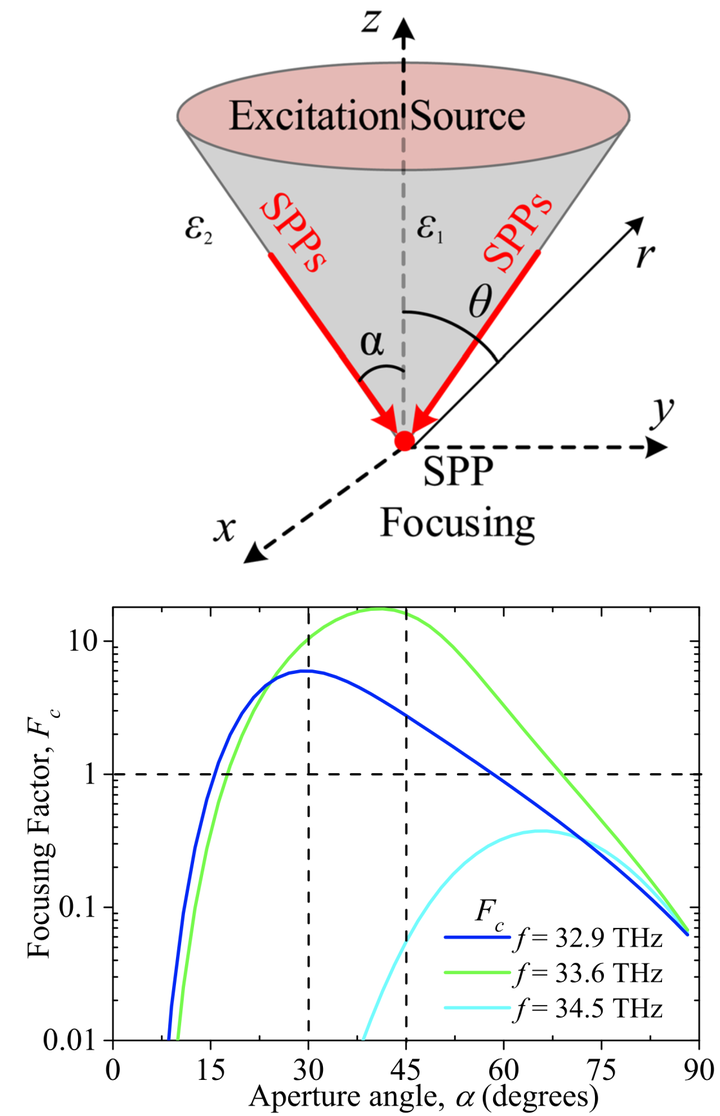
Abstract
Focusing of surface phonon-polaritons propagating toward the tip of a cone and the edge of a wedge is theoretically analyzed and compared. Based on Maxwell’s equations, explicit expressions for the dispersion relations in each structure are determined and solved numerically for a propagation parameter driving the surface phonon-polariton energy density. For conical and wedge structures of SiO2, it is found that: (1) the cone (wedge) supports the polariton focusing only for aperture angles in the interval 18°– 68° (21°– 51°), and within the range of excitation frequencies from 32.1 THz (31.5 THz) to 33.9 THz (33.9 THz). In this frequency interval, the real part of the SiO2 permittivity is negative and the presence of polaritons is significant. (2) The polariton focusing efficiency of both the cone and wedge reaches its maximum values at the critical frequency 33.6 THz and at different aperture angles of about 45° and 30°, respectively. (3) When the polaritons travel from 100 nm to 5 nm toward the tip of the cone with this optimum angle, their Poynting vector increases by a factor of 12, which is about four times larger than the corresponding one provided by the wedge and indicates that the cone is more efficient than the wedge for the focusing of surface phonon polaritons.